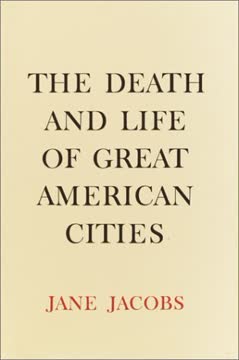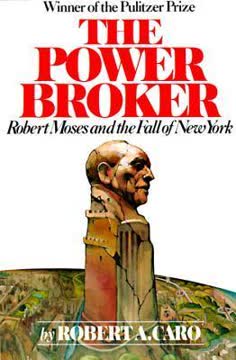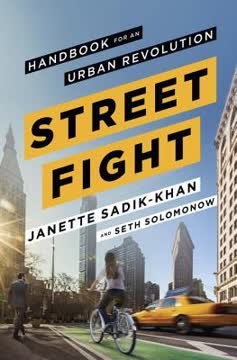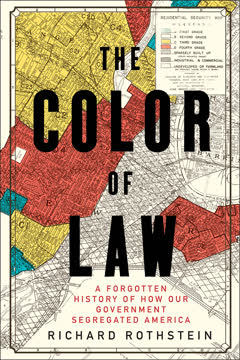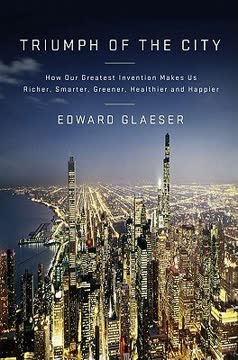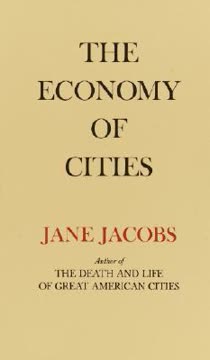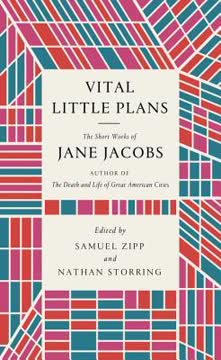Key Takeaways
1. Orthodox Planning Sacks Cities
This is not the rebuilding of cities. This is the sacking of cities.
A fundamental critique. Jane Jacobs launches a scathing attack on conventional city planning and urban renewal, arguing that its principles are fundamentally flawed and actively destroy the very vitality they claim to foster. She observes that billions of dollars have been spent creating "low-income projects that become worse centers of delinquency," "middle-income housing projects which are truly marvels of dullness," and "civic centers that are avoided by everyone but bums." This isn't progress; it's urban devastation.
Ignoring real-life cities. Planners, Jacobs contends, have ignored how cities actually work, instead basing their theories on idealized visions derived from:
- Towns and suburbs
- Tuberculosis sanatoria
- Fairs
- Imaginary dream cities (like Ebenezer Howard's Garden City or Le Corbusier's Radiant City)
This intellectual "mush" leads to monotonous, sterile environments that fail to address the complex needs of urban life.
The North End anomaly. Jacobs highlights Boston's North End, officially deemed a "slum" due to high density and old buildings, yet boasting:
- Among the lowest delinquency, disease, and infant mortality rates
- Lowest ratio of rent to income
- Vibrant street life and strong community ties
This contradicts every orthodox planning assumption, demonstrating that planners often mistake vitality for blight and seek to destroy what actually works.
2. Sidewalks are the City's Vital Organs
The public peace—the sidewalk and street peace—of cities is not kept primarily by the police, necessary as police are. It is kept primarily by an intricate, almost unconscious network of voluntary controls and standards among the people themselves, and enforced by the people themselves.
Eyes on the street. Successful city sidewalks are safe because they are continuously watched by "natural proprietors" – residents, shopkeepers, and other users. This constant, casual surveillance creates a sense of public trust and accountability. Buildings must be oriented towards the street, not turn their backs on it, to provide these "eyes."
Three qualities for safety: A street equipped to handle strangers and ensure safety must have:
- Clear demarcation between public and private space
- Eyes upon the street from buildings
- Continuous users on the sidewalk
Without these, streets become deserted and dangerous, as seen in many "quiet residential areas" or public housing projects, which often have higher crime rates than bustling "slums."
Beyond safety: contact and assimilation. Sidewalks are also crucial for fostering casual public contact, building a "web of public respect and trust" without demanding private commitments. This informal public life is essential for:
- Information exchange (e.g., job leads, local news)
- Community organization
- Assimilating children into responsible city life, teaching them to take "a modicum of public responsibility for each other."
This rich, unspecialized social interaction is lost in planned, isolated environments.
3. Diversity is the City's Economic Engine
To generate exuberant diversity in a city’s streets and districts, four conditions are indispensable.
Cities as diversity generators. Big cities are natural incubators of variety, supporting immense numbers of small enterprises and new ideas that couldn't exist elsewhere. This is because they concentrate diverse people with varied tastes, skills, and needs. Commercial diversity, in particular, is a strong indicator of overall urban vitality.
The four indispensable conditions: Jacobs identifies four key conditions that, in combination, create "effective economic pools of use" and foster exuberant diversity:
- Mixed primary uses
- Short blocks
- Aged buildings
- Dense concentration of people
The absence of any one of these conditions frustrates a district's potential for vitality.
Beyond superficiality. While planners often aim for superficial "variety" in design, true diversity is functional and economic. It's about the intricate interweaving of different activities and people, creating mutual support and continuous activity. This complexity is the city's strength, allowing it to adapt, grow, and offer a rich array of choices.
4. Mixed Primary Uses Drive Vitality
Unless a plan for a district which lacks spread of people through time of day gets at the cause of the trouble, the best that can be done is to replace old stagnation with new.
Time spread of users. A key aspect of diversity is ensuring that streets are used continuously throughout the day and night. This requires a mix of "primary uses" (e.g., residences, offices, factories, entertainment venues) that bring different people to the area on different schedules. For example, workers support midday commerce, while residents and entertainment-seekers support evening and weekend activity.
Economic inefficiency of single uses. Districts dominated by a single primary use, like downtowns that are solely "Central Business Districts," become economic deserts outside of peak hours. Lower Manhattan, with its 400,000 daytime workers, struggles to support diverse services because it's "deathlike still" after 5:30 PM and on weekends. Businesses cannot thrive if their customer base is only present for a few hours a day.
Effective mixtures. Primary use mixtures must be effective, meaning:
- People from different uses actually use the same streets.
- Users from different primary uses share some common facilities.
- The mix of people is reasonably proportionate across different times of day.
Frivolous or expensive leisure attractions, like a marine museum or free aquarium, could revitalize areas like Lower Manhattan by drawing people during off-peak hours, creating a balanced, vibrant environment.
5. Short Blocks Foster Intricate Life
Frequent streets are not an end in themselves. They are a means toward an end.
Interweaving paths. Short blocks, meaning frequent streets and opportunities to turn corners, are crucial for city vitality. They allow people to choose various routes, mixing paths and increasing the likelihood of chance encounters and cross-use. This "fluidity of use" is essential for forming intricate "pools of economic use" that support diverse businesses and social interactions.
Long blocks create isolation. Conversely, long blocks isolate street neighborhoods from each other, limiting pedestrian movement and concentrating commerce into monotonous strips. This physical segregation hinders the formation of diverse economic and social networks. For example, the long blocks of Manhattan's West Side have historically struggled to support diverse commerce compared to the short-blocked East Side.
Beyond "promenades." The value of frequent streets isn't just about physical access; it's about the activity they enable. Super-block projects, even with internal "promenades," often fail because these paths lack genuine reasons for diverse people to use them, becoming "meaningless" and deserted. Short blocks, combined with other diversity generators, create a dynamic urban fabric where life can flourish.
6. Aged Buildings Incubate New Ideas
Old ideas can sometimes use new buildings. New ideas must use old buildings.
Economic diversity. Cities desperately need old buildings, not just as historical artifacts, but as economically viable spaces. New construction is expensive, limiting occupancy to high-profit, well-established, or heavily subsidized enterprises (e.g., chain stores, banks). Old buildings, with their depreciated capital costs, offer low-overhead space essential for:
- Small, independent businesses (e.g., neighborhood bars, foreign restaurants, antique dealers)
- Cultural enterprises (e.g., studios, galleries, small theaters)
- New, experimental ventures that require leeway for "chancy trial, error and experimentation."
The "ever-normal granary." A successful city district maintains a mixture of buildings of many ages and types, constantly replacing some old with new, but never wiping out entire swaths. This dynamic balance ensures a continuous supply of varied overheads, allowing a wide spectrum of enterprises and populations to coexist and thrive. Without old buildings, diversity is stifled, and areas become monotonous and economically limited.
Unslumming and flexibility. Old buildings are vital for "unslumming" neighborhoods, allowing residents to rehabilitate and adapt spaces incrementally, often with their own labor and ingenuity. They also offer flexibility for diverse living arrangements and income levels. The ability to adapt old quarters to new uses, like a stable becoming a house or a warehouse a factory for Chinese food, is a hallmark of vital city districts, demonstrating responsiveness to human needs and ingenuity.
7. Dense Concentration Fuels Diversity
The very size, density and congestion of our Standard Metropolitan Areas, to which some city planners object, are among our most precious economic assets.
Concentration vs. overcrowding. Jacobs argues that high dwelling densities are crucial for city vitality, not a cause of slums. She distinguishes between:
- High densities: Many dwellings per acre, which can be a positive asset.
- Overcrowding: Too many people per room, a symptom of poverty or discrimination.
Successful areas like Boston's North End or San Francisco's North Beach have high densities but are not overcrowded, demonstrating that density itself is not inherently problematic.
The "in-between" densities. Densities that are too low for city life (e.g., 20-100 dwellings per acre) but too high for suburban functionality create "in-between" zones that are "fit for nothing but trouble." These areas lack the critical mass of people needed to generate diversity, safety, and convenience, often becoming stagnant gray belts.
Reconciling density and variety. High densities can coexist with building variety if:
- Ground coverage is high (buildings occupy a large percentage of the land), allowing for diverse building types.
- New construction is introduced gradually, adding variety over time rather than imposing standardization.
This approach fosters a rich mix of dwelling types and sizes, accommodating diverse populations and contributing to the overall vibrancy and economic strength of the city.
8. Success Can Destroy Diversity
The presence of an end product in the milieu of a cell causes the machinery that produces the end product to slow down or to stop. This form of cell behavior Dr. [Van R.] Potter [of the University of Wisconsin Medical School] characterized as “intelligent.” In contrast, a cell that has changed or mutated behaves like an “idiot” in that it continues without feedback regulation to produce even materials that it does not require.
The paradox of success. Outstandingly successful city diversity can, ironically, destroy itself. When a locality becomes highly popular, intense competition for space leads to the excessive duplication of the most profitable or prestigious uses, crowding out less profitable but essential diverse elements. This process is akin to a cell behaving like an "idiot," continuing to produce materials it no longer needs, leading to stagnation.
Hollow triumph. This "triumph" of a few dominant uses (e.g., too many restaurants on a street, too many banks at an intersection, or too many high-rent apartments in a residential area) ultimately undermines the intricate web of mutual support that created the success. The area becomes monotonous, loses its appeal to diverse users, and eventually declines, leaving behind "has-been districts."
Combating self-destruction. To prevent this, cities need "feedback" mechanisms:
- Zoning for diversity: Controls against excessive duplication of uses or building types, often by limiting height or preserving older structures.
- Staunchness of public buildings: Public institutions should remain in diverse settings, anchoring variety rather than relocating to isolated "cultural centers."
- Competitive diversion: Increasing the supply of other lively, diverse areas to diffuse demand and prevent over-concentration in one spot.
These measures aim to hamper destructive duplication and divert growth to places where it can be a healthy addition.
9. Borders Create Urban Vacuums
An edge may be more than simply a dominant barrier,” writes Lynch, “if some visual or motion penetration is allowed through it—if it is, as it were, structured to some depth with the regions on either side. It then becomes a seam rather than a barrier, a line of exchange along which two areas are sewn together.
Dead ends, not connections. Massive single uses like railroad tracks, expressways, large parks, or university campuses often form "borders" that act as dead ends for city streets. These borders create "vacuums of use" in adjoining areas, leading to scant pedestrian activity, economic infertility, and a spread of dullness and insecurity. They divide cities into isolated pieces, hindering cross-use and district formation.
Interference vs. contribution. While special land (like a park or campus) contributes users to the general city, its role as a geographic obstacle can overcome its role as a contributor. If a border is too immense or lacks points of "visual or motion penetration," it becomes a barrier rather than a "seam" that weaves areas together. This is why many civic centers, despite their grand intentions, often repel vitality.
Creating "seams." To counter border vacuums, cities should:
- Place public-oriented uses (e.g., zoos, museums, chess pavilions) at the perimeters of large parks or campuses, making them accessible from the street.
- Design these perimeter uses as "links" that belong to both the street and the special land, encouraging night use and activity.
- Introduce high population concentration, short blocks, and mixed primary uses in areas adjacent to borders to create strong "counterforces" that confine the vacuum effect.
The goal is to make borders active zones of exchange, not passive dividers.
10. Gradual Change, Not Cataclysmic Money, Builds Cities
The forms in which money is used for city building—or withheld from use—are powerful instruments of city decline today. The forms in which money is used must be converted to instruments of regeneration—from instruments buying violent cataclysms to instruments buying continual, gradual, complex and gentler change.
Money droughts and floods. City development is shaped by three types of money: conventional credit, government funds, and shadow-world investment. All three tend to behave "cataclysmically," either by creating "money droughts" (credit blacklisting of neighborhoods) or "torrential, eroding floods" (massive urban renewal projects). This prevents the "gradual money" needed for continuous, close-grained improvements and diversity.
Self-fulfilling prophecies. Credit blacklisting, often based on orthodox planning's "slum" designations, creates self-fulfilling prophecies of decay. When conventional loans are withheld, areas deteriorate, making them ripe for exploitative "shadow-world" money that finances slum conversions, or for government-funded "renewal" that bulldozes existing communities. The Back-of-the-Yards in Chicago, by threatening to withdraw deposits, forced banks to lend, demonstrating how communities can fight blacklisting.
Guaranteed-rent dwellings. Jacobs proposes a "guaranteed-rent" system for subsidized housing, where:
- Government guarantees financing and economic rent to private builders.
- Builders erect diverse buildings on designated plots, not massive projects.
- Tenants are selected from local areas, and their rent subsidy adjusts with income.
This approach fosters gradual, mixed-income development, supports existing communities, and integrates subsidized housing into the city's fabric, avoiding the destructive "slum shifting" and "slum immuring" of current public housing.
Last updated:
Review Summary
The Death and Life of Great American Cities is widely regarded as a seminal work on urban planning. Jacobs critiques modernist planning approaches, advocating for mixed-use neighborhoods, short blocks, and diverse building ages to create vibrant communities. Her observations on street safety, economic diversity, and the importance of local businesses resonate with many readers. While some find the book dated or anecdotal, most appreciate Jacobs' insights into what makes cities thrive. Her ideas continue to influence urban planning and development, though some argue she didn't anticipate issues like gentrification.
Similar Books
Download PDF
Download EPUB
.epub digital book format is ideal for reading ebooks on phones, tablets, and e-readers.
